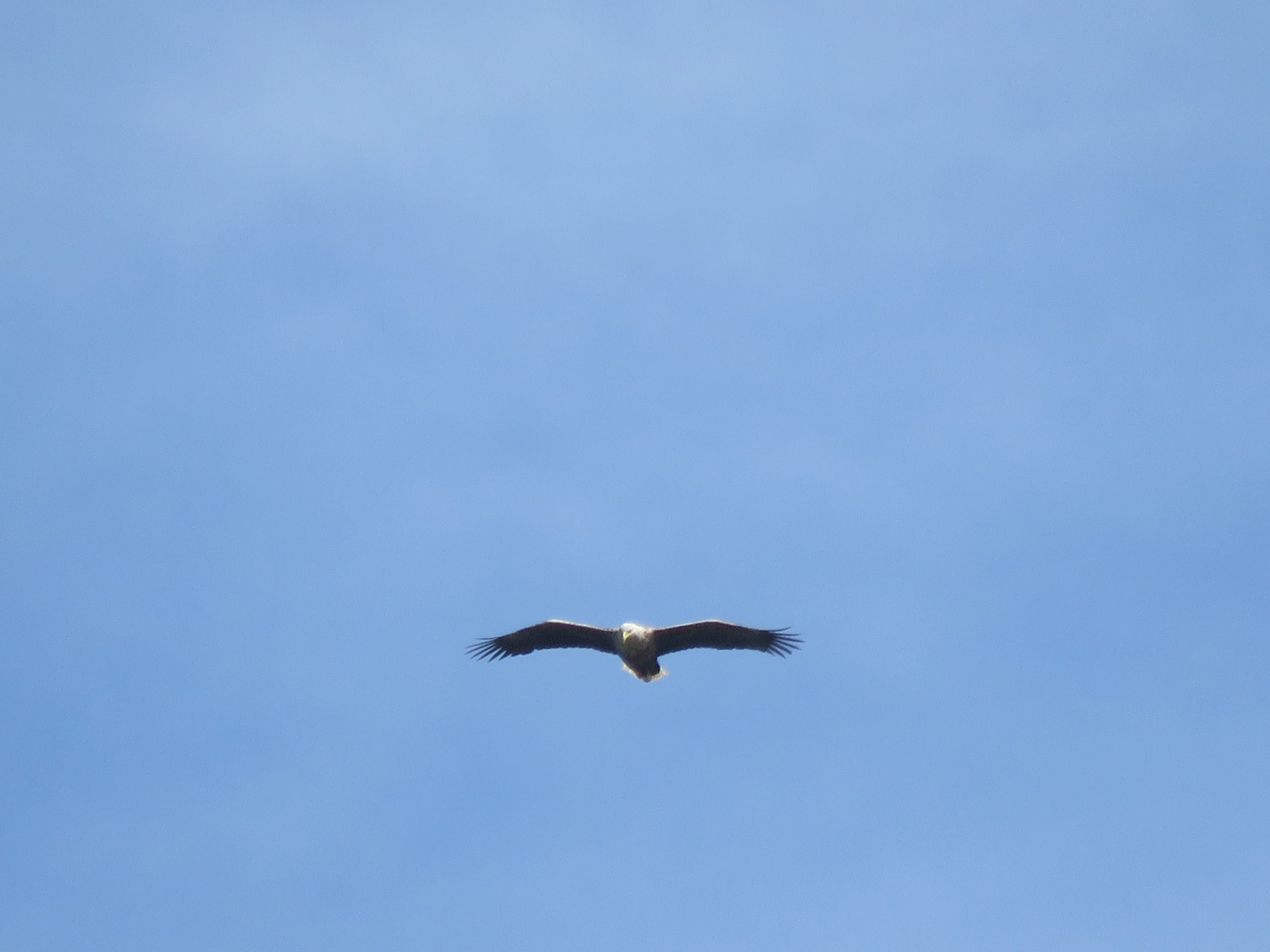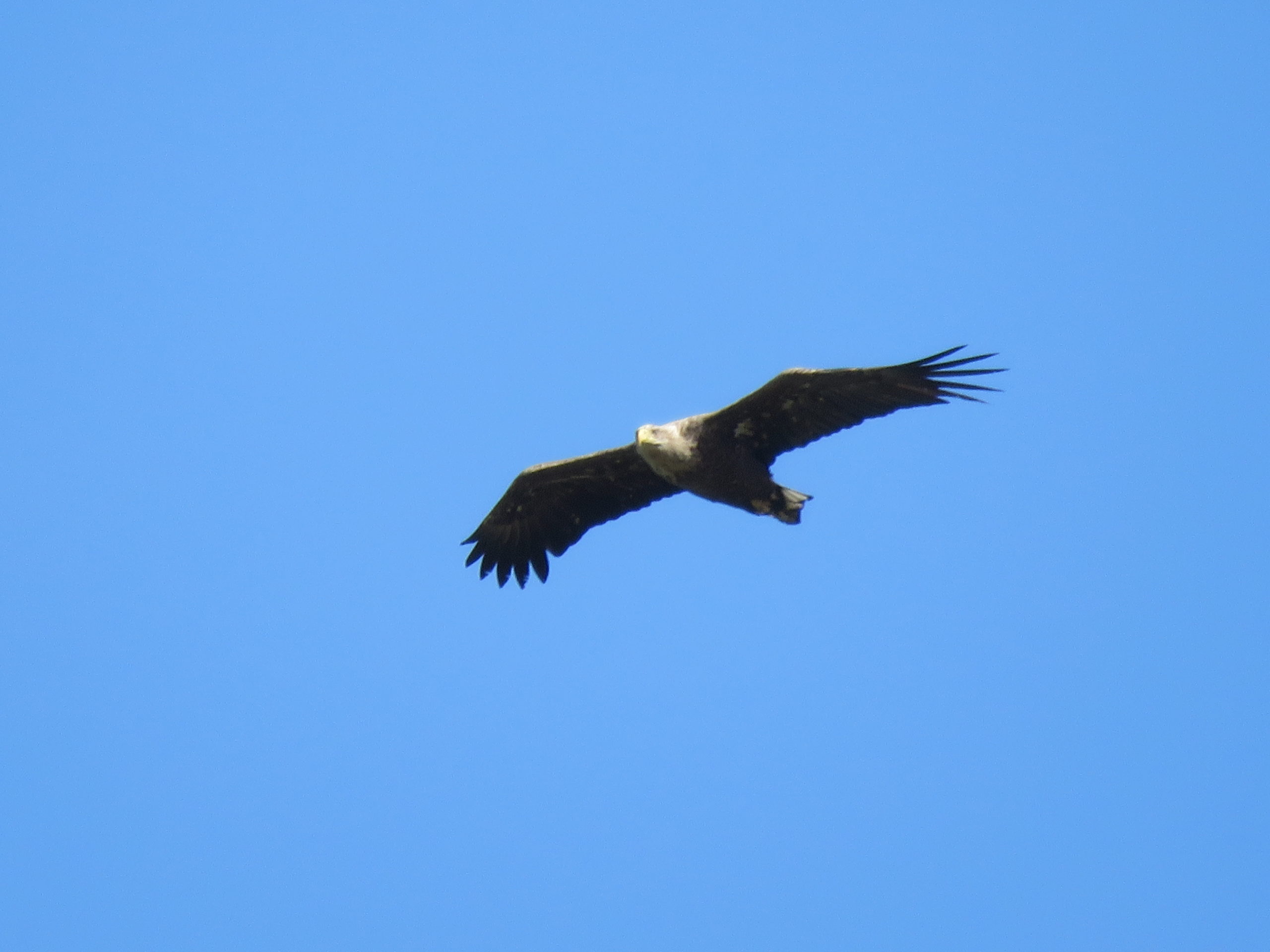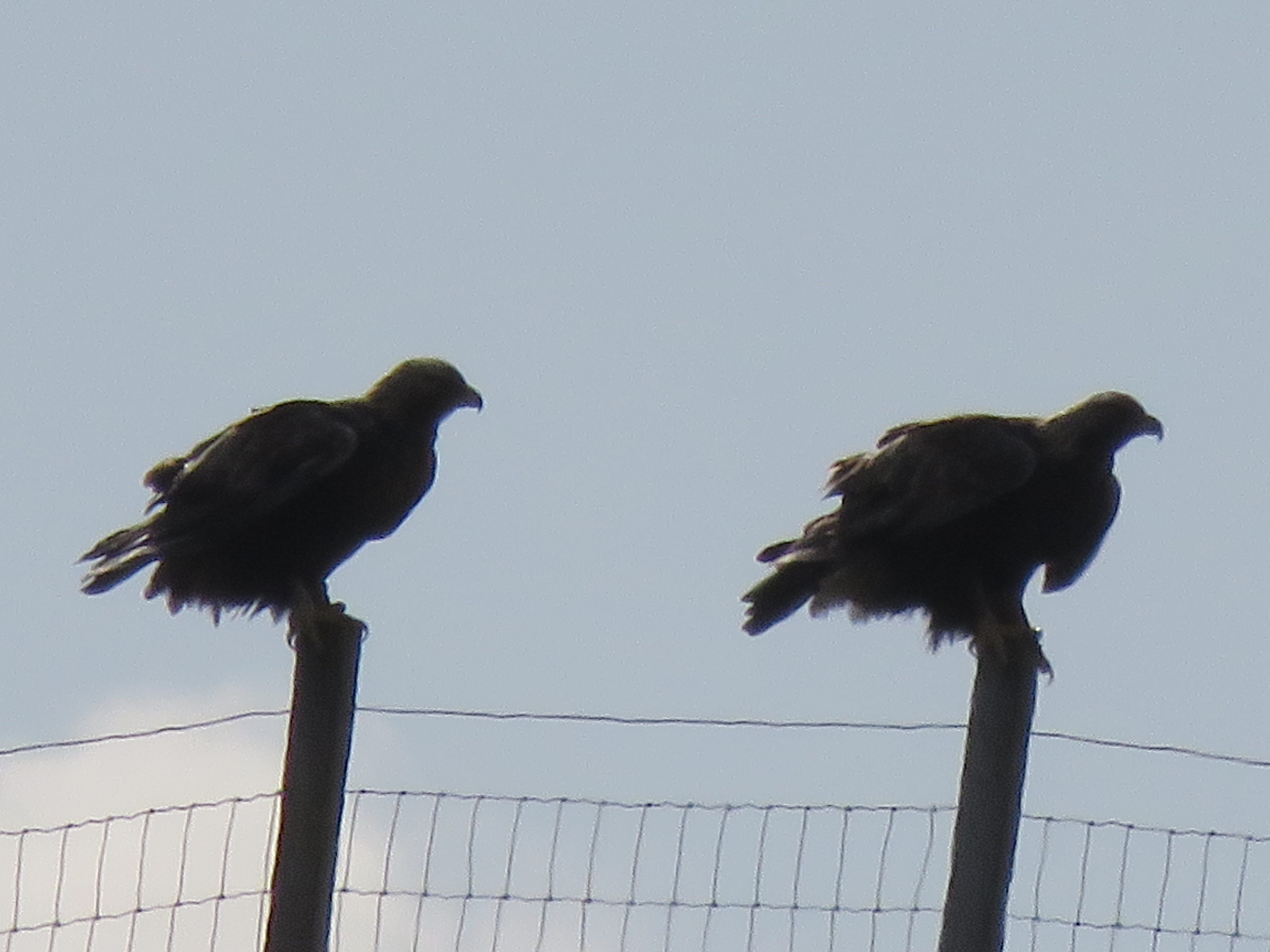Golden Eagle or White Tailed Eagle



The Western Isles provide a diverse habitat for many bird species, including the golden eagle (Aquila chrysaetos) and the white-tailed eagle (Haliaeetus albicilla). Telling the difference between these two majestic birds of prey can be a bit challenging, but here are some key features to help you identify them:
- Size: White-tailed eagles are generally larger than golden eagles. They have a wingspan of 6.5 to 8 feet (200-245 cm), while golden eagles have a wingspan of 6 to 7.5 feet (180-230 cm). White-tailed eagles are also more massive, weighing up to 15 pounds (6.8 kg), while golden eagles weigh up to 12 pounds (5.4 kg).
- Colouration: As their name suggests, golden eagles have a distinctive golden hue to their head, neck, and upper wings, while their body is dark brown. White-tailed eagles have a pale or white head and tail, with a mostly brownish-grey body. Juvenile white-tailed eagles are darker in colour, but their tail feathers gradually lighten with age.
- Wing shape: When in flight, the wings of a golden eagle are more angular and have a slightly upturned “V” shape, while the wings of a white-tailed eagle are broader and more evenly curved, resembling the shape of a large, flat plank.
- Flight patterns: Golden eagles tend to soar high in the sky, riding thermals and searching for prey. They often flap their wings less frequently than white-tailed eagles. White-tailed eagles, on the other hand, are more likely to be seen gliding low over water or land, using their large wings to take advantage of air currents.
- Habitat: While both species can be found in the Western Isles, they tend to occupy different habitats. Golden eagles prefer open moorland, mountains, and large expanses of land, whereas white-tailed eagles are more commonly found near coastal areas, estuaries, and large bodies of water.
- Diet: Golden eagles primarily prey on small to medium-sized mammals, such as rabbits and hares, as well as birds and carrion. White-tailed eagles have a more varied diet, feeding on fish, birds, and mammals, and are more likely to scavenge from carrion, especially during the winter months.
By observing these differences in size, colouration, wing shape, flight patterns, habitat, and diet, you should be able to distinguish between a golden eagle and a white-tailed eagle when visiting the Western Isles. Keep in mind that some characteristics may be more obvious than others, depending on the age and individual variation of the birds.